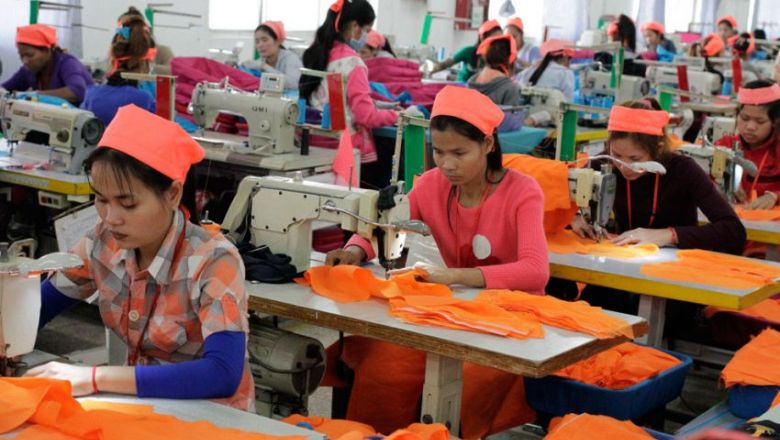Cambodia’s H1 RCEP exports balloon by 24%
Cambodia’s H1 RCEP exports balloon by 24%
Cambodia exported $4.071 billion worth of goods to the other 14 members of the Regional Comprehensive Economic Partnership (RCEP) in the first half of 2023, up more than 24 per cent from $3.281 billion a year ago, according to the Ministry of Commerce.
The ASEAN-led RCEP is the world’s largest free trade agreement (FTA), encompassing the Southeast Asian bloc’s 10 member states – Cambodia, Brunei, Indonesia, Laos, Malaysia, Myanmar, the Philippines, Singapore, Thailand and Vietnam – and five additional Asia-Pacific countries: Australia, China, Japan, South Korea and New Zealand.
The RCEP took effect on January 1, 2022 in Cambodia. Other member states saw varying implementation dates.
A commerce ministry bulletin obtained by The Post on July 18 showed that trade between the Kingdom and the other RCEP states between January and June clocked in at $14.811 billion, down more than 8.8 per cent year-on-year from $16.242 billion.
Cambodian imports made up more than 72.5 per cent of that, standing at $10.740 billion, down over 17 per cent year-on-year from $12.962 billion.
Meanwhile, the January-June trade volume between Cambodia and the other ASEAN states hit $7.139 billion, down more than 17.2 per cent from $8.624 billion a year earlier. Cambodian imports and exports were $4.659 billion and $2.481 billion, down 31 per cent and up 36 per cent from $6.798 billion and $1.826 billion in the first half of 2022.
The ASEAN and RCEP trade blocs contributed 30.1 per cent and 62.5 per cent of Cambodia’s international trade in the first half of this year.
Commerce ministry undersecretary of state and spokesman Penn Sovicheat anticipates that Cambodia’s exports to fellow RCEP members will continue to exhibit “positive signs”, taking into account the trade pact’s crucial contribution to the expansion of regional markets and emergence of new opportunities for intra-regional trade.
Nonetheless, he reaffirmed the Kingdom’s commitment to improving diplomatic and trade cooperation with non-RCEP countries as well, such as India, which is perhaps now the world’s most populous country.
“The US and China are considered to be the top economies. However, here in Asia – beyond China, Japan and [South] Korea, it can be argued that India is experiencing stronger economic growth and is tipped to expand even faster in the future,” he said.
Cambodia Chamber of Commerce vice-president Lim Heng praised the RCEP and Cambodia’s other trade agreements as “stepping stones” for the country’s economic development, and urged domestic actors to reap maximum benefits from these deals.
Nevertheless, he acknowledged that Cambodia faces difficulties as a result of the RCEP’s regional nature, particularly in terms of competition with other major agricultural exporters in the bloc, such as Vietnam and Thailand.
“The RCEP gives agricultural commodities preferential trade treatment – they’re important and indispensable. Therefore, rather than just exporting the agricultural raw materials that we have, we need to be able to process them,” Heng stressed.














